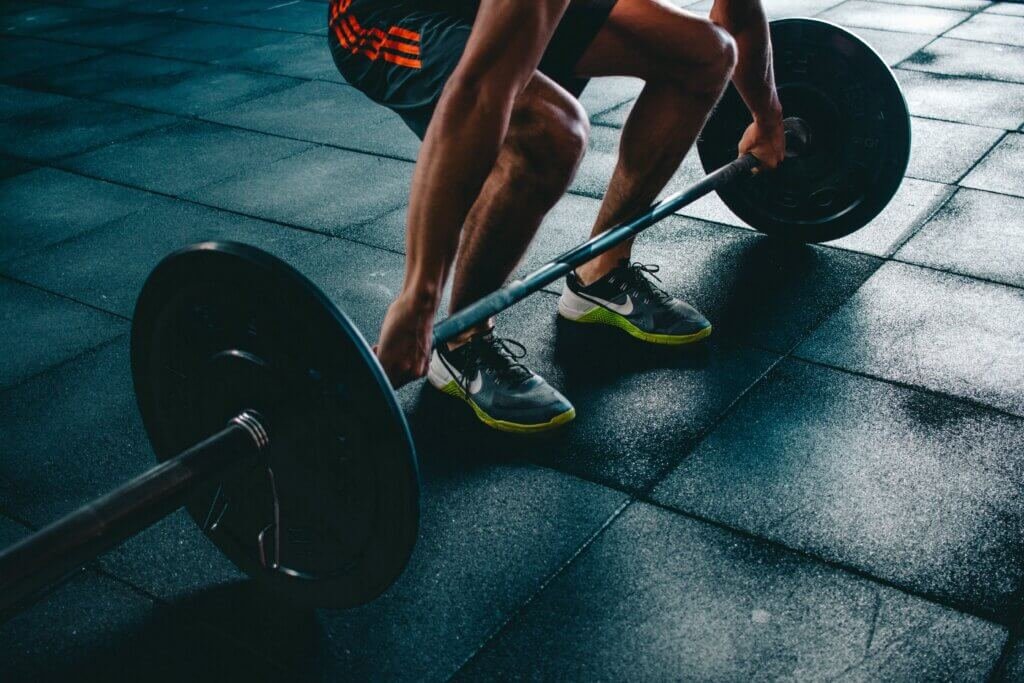Are you looking to level up your workout routine and achieve your fitness goals? Look no further than resistance bands, the ultimate workout accessories that can help you enhance your strength, flexibility, and muscle tone. Whether you’re a beginner or a seasoned fitness enthusiast, this comprehensive guide will take you through everything you need to know about resistance bands, from their benefits and types to how to incorporate them effectively into your workouts. Get ready to revolutionize your fitness journey with the power of resistance bands!

1. Types of Resistance Bands
1.1 Loop Bands
Loop bands are one of the most popular types of resistance bands due to their versatility and ease of use. They are typically made from a continuous loop of elastic material and are available in various resistance levels. Loop bands can be used for a wide range of exercises, such as squats, lunges, and glute bridges, targeting both the upper and lower body. They are particularly effective for activating and strengthening the muscles of the hips and glutes.
1.2 Tube Bands
Tube bands consist of a length of elastic material with handles on both ends. They are often referred to as “handles bands” due to their ergonomic design, which allows for a comfortable grip during exercises. Tube bands come in different resistance levels and offer a wider range of exercises compared to loop bands. They can be used for upper body exercises like biceps curls and triceps extensions, as well as lower body exercises like leg press and deadlifts.
1.3 Figure 8 Bands
Figure 8 bands, as the name suggests, have a figure-eight shape with handles on both ends. This unique design allows for a secure grip and provides added stability during exercises. Figure 8 bands are great for targeting specific muscle groups, such as the shoulders and chest. They can be used for exercises like shoulder press and chest press, providing an effective workout for the upper body.
2. Benefits of Using Resistance Bands
2.1 Versatility of Exercises
One of the key benefits of using resistance bands is their versatility. They can be used to target various muscle groups and can be incorporated into a wide range of exercises. Whether you’re looking to strengthen your biceps, tone your glutes, or improve your core stability, resistance bands can be easily adapted to suit your fitness goals.
2.2 Time-Efficient Workouts
Resistance band workouts are known for their efficiency. With resistance bands, you can work multiple muscle groups simultaneously, saving you time and maximizing your workout. By using different band positions and angles, you can increase or decrease the level of resistance, allowing for a more challenging or less intense workout, depending on your preference.
2.3 Portable and Lightweight
One of the biggest advantages of resistance bands is their portability and lightweight nature. Unlike bulky gym equipment, resistance bands can be easily folded and stored in a small bag or suitcase, making them perfect for travel or workouts on the go. You can enjoy a full-body workout anywhere, whether it’s at the park, in a hotel room, or even in your own living room.
2.4 Joint-Friendly Workouts
Resistance bands provide a low-impact form of exercise that is gentle on the joints. Unlike heavier weights or machines, resistance bands offer a controlled level of resistance that reduces the risk of joint strain or injury. This makes them ideal for individuals with joint issues or those who are recovering from injuries.
2.5 Suitable for All Fitness Levels
Regardless of your fitness level, resistance bands can be tailored to suit your individual needs. They come in different resistance levels, ranging from light to heavy. Beginners can start with lighter resistance bands and gradually work their way up as they gain strength and flexibility. Likewise, advanced users can challenge themselves by using heavier resistance bands or increasing the number of repetitions.
3. How to Choose the Right Resistance Band
3.1 Resistance Levels
When choosing a resistance band, it’s important to consider the appropriate resistance level for your fitness level and goals. Light resistance bands are suitable for beginners or individuals recovering from injuries, while heavy resistance bands provide a greater challenge for advanced users. It’s recommended to have a variety of resistance levels to cater to different exercises and muscle groups.
3.2 Band Material
Resistance bands are typically made from either latex or fabric. Latex bands offer more elasticity and are generally more durable, while fabric bands are non-latex alternatives that provide a comfortable and non-slip grip. Consider your personal preferences and any allergies or sensitivities when selecting the band material.
3.3 Length and Size
Resistance bands come in various lengths, with longer bands providing more versatility for exercises that require larger ranges of motion. Shorter bands, on the other hand, are more suitable for exercises that require more tension. It’s important to choose a band length that allows you to perform exercises safely and comfortably.
3.4 Comfort and Grip
The comfort and grip of the resistance band are crucial for a successful workout. Look for bands that have padded handles or additional grip aids to prevent slipping and provide a comfortable grip during exercises. Additionally, bands with adjustable features, such as Velcro straps or buckles, can provide a customized fit for different body sizes and shapes.
4. Safety Considerations and Proper Form
4.1 Warm-up and Stretching
Before starting a resistance band workout, it’s important to warm up your muscles and do some stretching exercises. This helps increase blood flow to the muscles, improves flexibility, and reduces the risk of injuries. Spend a few minutes doing light cardio exercises, such as jogging or jumping jacks, followed by dynamic stretches that target the areas you’ll be working on.
4.2 Technique and Range of Motion
Proper technique and range of motion are essential when using resistance bands. Pay attention to your form and ensure that you’re using correct posture throughout the exercises. Avoid excessive jerking or swinging movements, as this can strain your muscles and increase the risk of injury. Focus on controlled movements, maintaining tension on the band, and engaging the targeted muscles.
4.3 Monitoring Fatigue and Avoiding Overexertion
It’s important to listen to your body and avoid overexertion during resistance band workouts. Gradually increase the intensity and resistance level as you progress, but be mindful not to push yourself too hard. If you experience excessive fatigue or pain, it’s a sign to take a break or reduce the resistance level. Remember, consistency is key, and it’s better to have a sustainable workout routine than to risk injury by overdoing it.
4.4 Additional Safety Tips
In addition to proper form and monitoring fatigue, there are a few additional safety tips to keep in mind when using resistance bands. Always inspect the band for any signs of wear or damage before each use. If the band is frayed, torn, or stretched out, it’s time to replace it. Also, be cautious when anchoring the band to a sturdy object, ensuring that it is secure and won’t snap back unexpectedly.

5. Upper Body Exercises with Resistance Bands
5.1 Biceps Curls
To perform biceps curls with resistance bands, stand with your feet shoulder-width apart, and place the band under both feet. Hold the handles with an underhand grip and curl your hands towards your shoulders by bending at the elbows. Keep your elbows close to your sides and control the movement as you extend your arms back down.
5.2 Triceps Extensions
To target the triceps, hold one end of the resistance band with your left hand and place the other end under your left foot. Extend your left arm overhead, keeping it close to your ear, and then slowly lower the hand towards your back. Control the movement as you straighten the arm back up.
5.3 Shoulder Press
For the shoulder press, stand on the resistance band with your feet shoulder-width apart. Hold the handles at shoulder height with an overhand grip and palms facing forward. Press the handles upward, extending your arms fully overhead, and then slowly lower them back down to shoulder height.
5.4 Chest Press
To target the chest muscles, anchor the resistance band behind you by securing it to a sturdy object. Hold the handles in front of your chest with your elbows bent and palms facing down. Press the handles forward until your arms are fully extended, and then slowly bring them back towards your chest.
5.5 Back Rows
Anchor the resistance band to a sturdy object at waist height. Step back so that you feel tension in the band and hold the handles with an overhand grip. Stand with your feet shoulder-width apart and slightly bend your knees. Keeping your back straight, pull the handles towards your chest by squeezing your shoulder blades together. Slowly release the tension and repeat.
6. Lower Body Exercises with Resistance Bands
6.1 Squats
Place the resistance band just above your knees and stand with your feet hip-width apart. Lower into a squat position by bending at the knees and hips, pushing your glutes back as if sitting on a chair. Keep your chest up, engage your core, and maintain tension on the band. Press through your heels to return to the starting position.
6.2 Lunges
Stand with one foot forward and the other foot back, keeping your feet hip-width apart. Step forward with your front foot and lower your body by bending both knees, until your back knee is just above the ground. Push through your front heel to rise back up, maintaining tension on the band throughout the movement. Alternate legs and repeat.
6.3 Glute Bridges
Lie on your back with your knees bent and feet flat on the ground. Place the resistance band just above your knees. Engage your core and drive through your heels to lift your hips off the ground, forming a straight line from your knees to your shoulders. Squeeze your glutes at the top of the movement and slowly lower your hips back down.
6.4 Leg Press
Anchor the resistance band to a sturdy object behind you and position yourself facing away from the anchor point. Place the resistance band just above your knees and stand with your feet hip-width apart. Keeping your core engaged, push your hips back and lower into a squat position. Drive through your heels to press against the resistance band and straighten your legs. Slowly return to the starting position.
6.5 Deadlifts
Stand on the resistance band with your feet hip-width apart and hold the handles with an overhand grip. Keep your knees slightly bent and engage your core. Hinge at the hips, lowering your upper body while keeping your back straight. Maintain tension on the band as you lower and drive through your heels to return to the upright position.

7. Full Body Exercises with Resistance Bands
7.1 Resistance Band Push-ups
Start in a plank position with the resistance band looped around your upper back. Hold the handles with your hands shoulder-width apart and perform push-ups, keeping your core engaged and maintaining tension on the band throughout the movement. This variation adds resistance to the traditional push-up, increasing the challenge for your chest, shoulders, and triceps.
7.2 Resistance Band Pull-ups
Secure the resistance band to a pull-up bar, placing one foot or knee in the band for assistance. Grip the bar with your hands shoulder-width apart and hang with your arms fully extended. Engage your back muscles and pull yourself up until your chin is above the bar, using the resistance of the band to assist your pull-up. Slowly lower yourself back down and repeat.
7.3 Resistance Band Plank
Wrap the resistance band around your upper back and hold the handles in each hand. Assume a plank position with your elbows bent at 90 degrees and forearms resting on the ground. Maintain tension on the band and engage your core muscles as you hold the position for a designated period of time, working your entire core and upper body.
7.4 Resistance Band Mountain Climbers
Start in a high plank position with the resistance band looped around your feet. Keeping your core engaged and your hands shoulder-width apart, bring one knee towards your chest and then quickly switch to the other knee. Repeat the motion in a fast and controlled manner, simulating the climbing of a mountain while adding resistance to your abdominal, hip, and shoulder muscles.
7.5 Resistance Band Russian Twists
Sit on the ground with your legs extended and loop the resistance band around your feet. Hold the handles in front of your chest and lean back slightly, engaging your core muscles. Twist your torso to one side, bringing the handles towards the ground beside your hip, and then twist to the opposite side. Repeat the twisting motion while maintaining tension on the band, working your obliques and abdominal muscles.
8. Resistance Bands for Rehabilitation and Physical Therapy
8.1 Stretching and Flexibility
Resistance bands can be a valuable tool in rehabilitation and physical therapy for stretching and improving flexibility. By using the band to provide gentle resistance, individuals can safely and gradually increase their range of motion. Resistance band stretching can help alleviate tight muscles, reduce muscle imbalances, and aid in injury prevention.
8.2 Recovery and Injury Prevention
Resistance bands are also beneficial for recovery and injury prevention. They can be used to strengthen weak or injured muscles, improve joint stability, and promote proper movement patterns. Resistance band exercises can target specific areas of weakness or vulnerability, helping individuals regain strength and prevent future injuries.
8.3 Balance and Stabilization Exercises
Many resistance band exercises require balance and stability, making them ideal for rehabilitating and strengthening the body’s stabilizer muscles. By challenging these smaller muscles, individuals can improve their overall balance, coordination, and posture. Resistance bands can be used for exercises such as single-leg standing exercises, lateral leg raises, and rotational movements to target these important muscle groups.
8.4 Rehabilitation Exercises
Resistance bands offer a wide range of exercises that can be tailored to specific rehabilitation needs. Whether you’re recovering from a knee injury, rehabilitating a shoulder, or managing chronic pain, resistance bands can be used in a controlled and progressive manner to regain strength, mobility, and function. It’s important to always consult with a qualified healthcare professional or therapist for guidance on specific exercises and protocols.

9. Incorporating Resistance Bands into your Workout Routine
9.1 Warm-up and Activation
Start your workout routine with a dynamic warm-up to increase blood flow and prepare your muscles for exercise. Incorporate resistance band exercises that target the major muscle groups you’ll be working during your workout. For example, perform leg swings, shoulder circles, or lateral band walks to activate and engage specific muscle groups.
9.2 Strength Training
Resistance bands can be used as a standalone strength training tool or in combination with other equipment, such as dumbbells or kettlebells. Incorporate resistance band exercises into your regular strength training routine, targeting different muscle groups and varying the resistance levels to challenge your muscles in new ways. For example, you can use resistance bands for biceps curls, overhead presses, or squats.
9.3 Cardiovascular Workouts
Although resistance bands are primarily known for their strength training benefits, they can also be incorporated into cardiovascular workouts. Perform exercises like resistance band jumping jacks, burpees with resistance, or resistance band sprints to elevate your heart rate and challenge your cardiovascular system. These exercises provide a fun and effective way to add intensity to your cardio routine.
9.4 Stretching and Flexibility
After your workout, use resistance bands for static stretching to improve flexibility and aid in muscle recovery. Perform stretches targeting major muscle groups, such as hamstring stretches, chest stretches, or shoulder stretches, using the resistance band to gradually increase the intensity and range of motion. This can help reduce muscle soreness and prevent muscle imbalances.
9.5 Circuit Training
Circuit training is a form of high-intensity interval training that combines strength and cardiovascular exercises in a circuit format. Incorporate resistance band exercises into your circuit training routine, alternating between exercises that target different muscle groups and include bursts of cardiovascular activity. This will provide a full-body workout that challenges both strength and endurance.
10. Maintenance and Care of Resistance Bands
10.1 Cleaning and Hygiene
To maintain the cleanliness of your resistance bands, wipe them down with a damp cloth after each use. This will help remove any sweat or dirt that may have accumulated. For a deeper clean, you can use mild soap and water to wash the bands, but be sure to thoroughly rinse them and allow them to air dry before using or storing them.
10.2 Storage and Organization
Proper storage and organization of resistance bands can help prolong their lifespan and prevent damage. Keep your bands in a clean, dry area where they are protected from extreme temperatures and direct sunlight. Consider using a storage bag or bin to keep them neatly organized and prevent tangling or stretching.
10.3 Inspection and Replacement
Regularly inspect your resistance bands for any signs of wear or damage. Look for fraying, tears, or stretches that compromise the integrity of the band. If you notice any damage, it’s important to replace the band to ensure safe and effective workouts. It’s recommended to replace resistance bands every 6 to 12 months, depending on their frequency of use and condition.
10.4 Extending Lifespan
To extend the lifespan of your resistance bands, handle them with care and avoid excessive stretching or pulling beyond their recommended limit. Store them properly and avoid sharp objects or rough surfaces that may cause damage. Regularly clean and inspect your bands to ensure they remain in good condition. By following these tips, you can enjoy the benefits of resistance bands for a longer period.
Resistance bands are a versatile and effective workout accessory that can be used by individuals of all fitness levels. From strength training to rehabilitation, these bands offer a wide range of exercises and benefits. By understanding the different types of resistance bands, choosing the right one for your needs, and incorporating them into your workout routine, you can enhance your fitness journey and achieve your goals. Remember to prioritize safety, proper form, and regular maintenance to maximize the lifespan and effectiveness of your resistance bands. So grab your resistance bands, get creative with your workouts, and have fun as you work towards a stronger and healthier you!



